 Rediff.com reader Naveen Sreepada from Mumbai aims his camera to capture the vagrant wildlife in motion.
Rediff.com reader Naveen Sreepada from Mumbai aims his camera to capture the vagrant wildlife in motion.
Take a look.
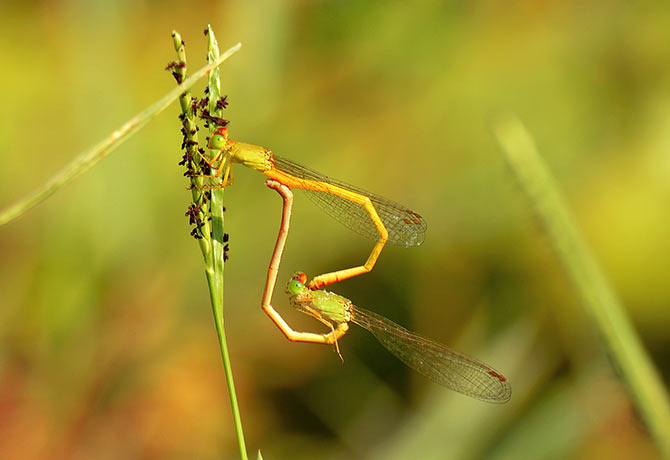
This photograph was taken near a lake in my village in Karimnagar District, Telangana.
I came across some damselflies, so I moved slowly towards them to take a closer shot.
When I saw a couple of them mating, I hit the trigger.
As the couple was constantly flying, I had to wait patiently to take some good shots particularly without disturbing their position.
During mating, the male uses claspers at the tip of his abdomen to grasp the female behind her head. The male then flexes his abdomen to encourage the female to loop her abdomen around to interlock with him, forming a 'Heart' pose.
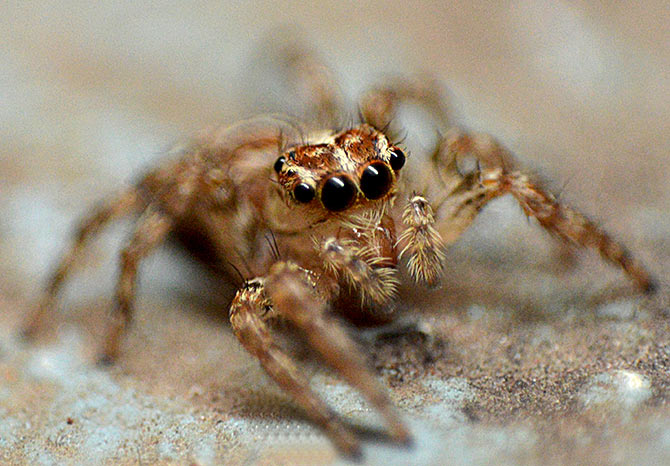
Normally, macro photography can be done with the help of a sophisticated and expensive lens. But, there are also some ways this can be done for less than the cost of a pizza.
I used the reverse ring technique to click this spider with my DSLR camera. The spider is just 7 mm and it has eight eyes.
EXPERT TIP: In Reverse Ring technique, the standard lens (18 to 55 mm) or prime lens (35/50 mm) is attached to the camera body in the reverse direction mounting the ring in between the lens and camera body. You have to operate the camera in manual mode as there will be no CPU control when you connect the reverse ring. When clicked, you will be amazed to see the output of the close up pictures.
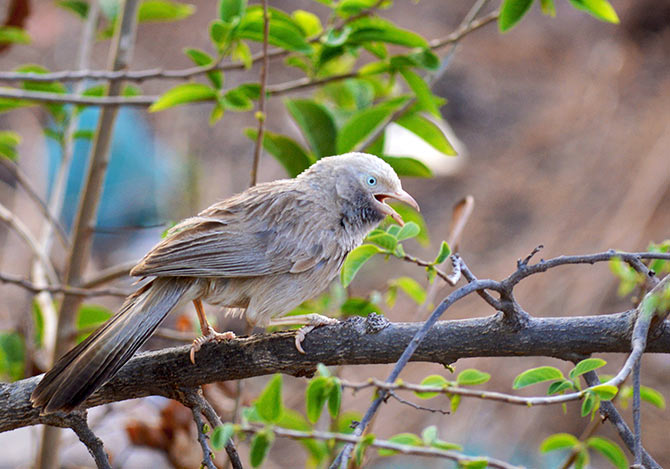
The name of this bird is Jungle Babbler, scientifically called as Turdoides Striata.
I found this bird in the backyard of my house foraging on a tree for food.
Jungle Babblers are very noisy and are found all over India, including cities, suburbs, towns and villages!
Slightly dust brown in colour, they have a dull yellow bill. When it opens it beak and eyes wide, I thought they resembled Angry Bird from the famous cartoon series.
Jungle Babblers are generally very social and can be seen in groups. This nature has inspired localites to coin several colloquial names such as saath behen, saath bhai, meaning ‘seven siblings’.
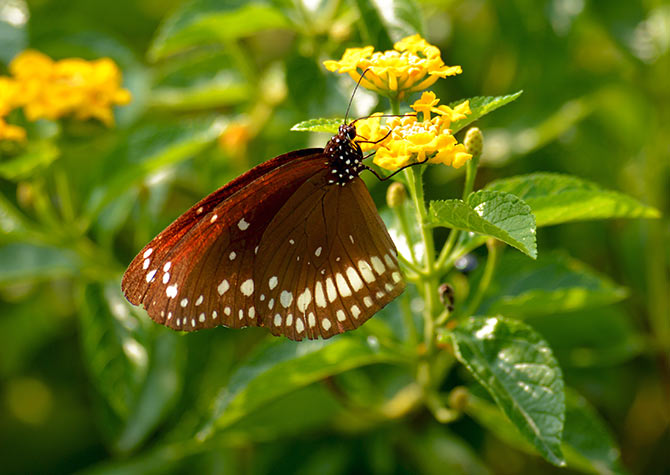
This photograph was taken at Maharashtra Nature Park (MNP) near Dharavi, Mumbai.
Its scientific name is Euploea Core, a common butterfly found in South Asia and Australia. In India it is also sometimes referred to as the Common Indian Crow, and in Australia as the Australian Crow.
The adult butterfly is recognised by its dark brown wings that are spotted white along the margins.
While feeding, it takes a longer time at each bunch of flowers unlike of many other butterflies that dodge frequently. This trait enables the photographers to take effortless shots.

This photograph was taken also at the backyard of my house. Like butterflies, Sunbirds also demand a lot of patience. One needs to stick to the position holding the camera and continuously click multiples shots while the birds jumps from one place to another. I had to take approximately 25 shots to get the best and unflickered shot.
The purple sunbird (Cinnyris asiaticus) feed mainly on nectar, although they will also take insects, especially when feeding young. They have a fast and direct flight and can take nectar by hovering like a hummingbird but often perch at the base of flowers.
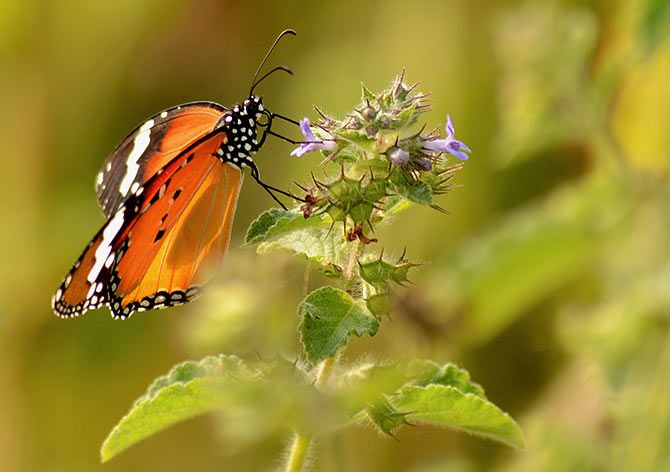
This bright coloured butterfly, scientifically known as Danaus chrysippus, was clicked at my village in Telangana. Also known as the Plain Tiger or African monarch, is a medium-sized butterfly widely found in Asia and Africa. The forewings are orange-brown with a series of white spots along the edges.
The bright coloured beauty has been widely used in art forms in history.
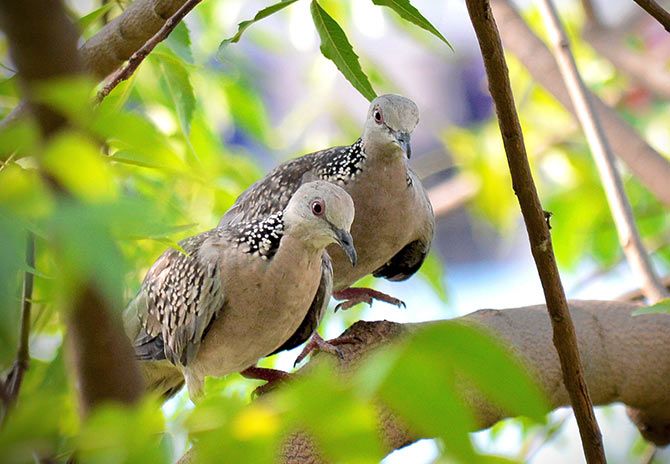
I found this couple in the beautiful city of Hyderabad. I noticed these spotted doves sitting on a neem tree near the apartment where I was staying. It is also known as Lace Necked Dove; its distinguishing feature being the black half collar that is finely spotted with white dots.
These doves feed on insects and grains.
The birds were continuously looking at me as if they were posing for the camera. The couple seemed to have a strong relationship between them as I spotted them together on the tree for several days.

This is my special click from my Bird Portfolio.
The Purple Heron is a slender bird, measuring less than 1 metre in length. They have a wingspan of almost 1.2 to 1.5 metre. They feast on fish, frogs, reptiles, insects and crustaceans.
I was taken by surprise when I found this bird flying in the air smoothly just a few feet over the lake near my house. I was lucky to capture its flight so sharply.
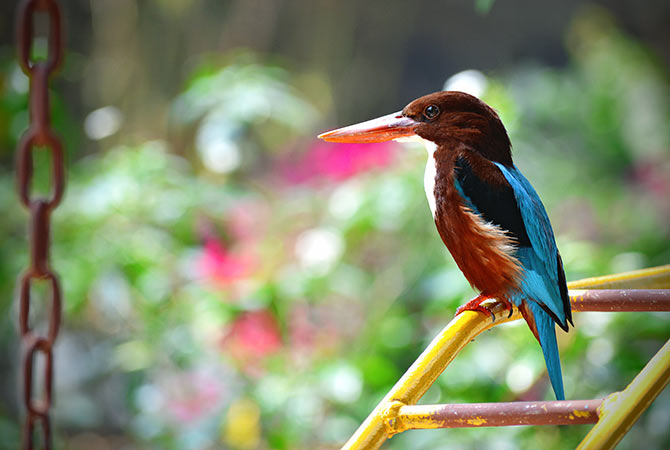
This is my first ever click of White Throated Kingfisher.
Whenever I see a kingfisher, I approach it closely (at a distance of approx 15 m) to get a good shot. But the bird is so intuitive that it always flies away and denies the opportunity.
Once when I, along with my family, visited Nehru Science Centre in Worli, Mumbai, I noticed this beauty sitting on a playing equipment in the garden.
It was sitting calm and peaceful so I could click it from a close distance. This time, I was standing approx 8 m away from it. I even experimented with multiple camera settings till I was convinced with this best shot.

I clicked this at my village in 2015. Its common names include broad scarlet, common scarlet-darter, scarlet darter and scarlet dragonfly. The adult male scarlet dragonfly has a bright scarlet red, widened abdomen, with small amber patches at the bases of the hindwings. Females have yellow-brown colour.
Until some 20 years ago, the sighting of a Scarlet was rare and newsworthy in some countries. Now, we can see it in large populations though.
The red colour adds a distinct brightness to the green canvas, especially when it halts on stems, leaves and flowers.










